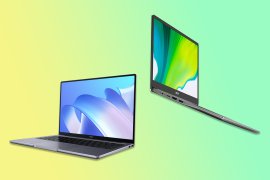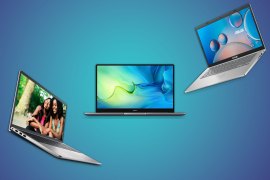Dell XPS 14 review: a potent yet pricey premium laptop
Elegant looks, esports-ready GPU
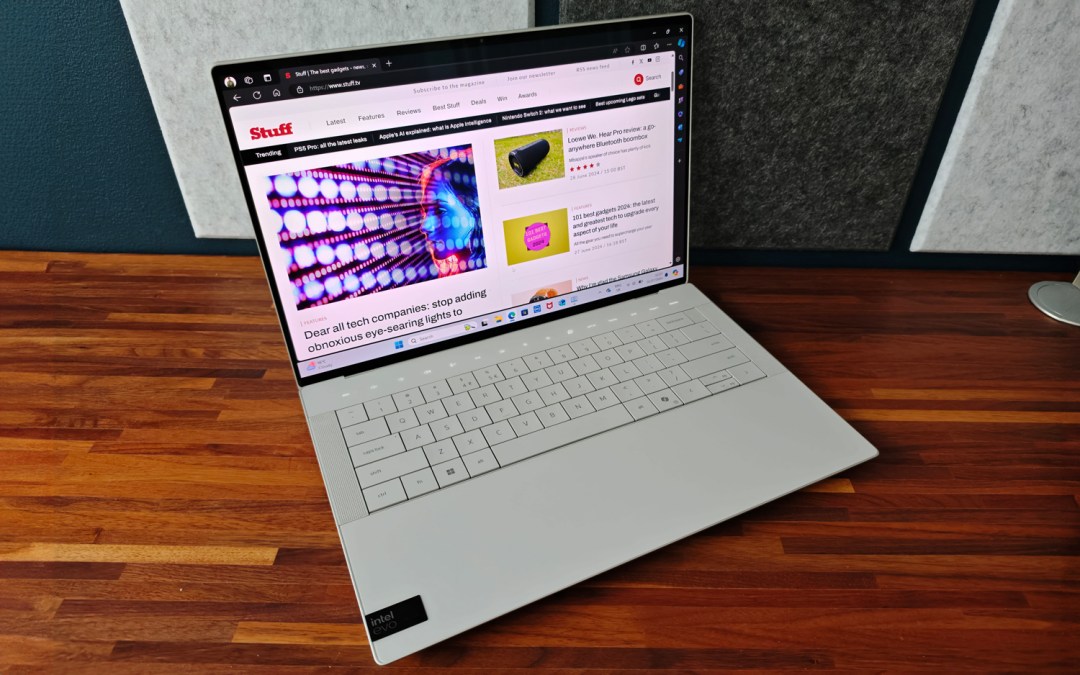
Stuff Verdict
Dell’s streak of potent yet portable premium laptops continues – but the XPS 14 faces stronger Windows competition than previous efforts, and still can’t escape the MacBook Pro’s shadow.
Pros
- Impeccable OLED display
- Potent performance and a capable gamer with the right GPU
- As slickly styled as the XPS has ever been
Cons
- Battery life can’t match any MacBook Pro
- Top-spec versions are mighty pricey
- Touchbar more flash than functional
Introduction
The XPS 14 is something of a reboot for Dell’s long-running premium laptop line. They used to be some of the most desirable Windows machines going, but the most recent generation’s two-tier approach didn’t go down well with fans. Rivals have also stepped up their game, so a podium position on best laptop lists was no longer guaranteed.
Dell’s response? Take the outgoing XPS 13 Plus‘ distinctive styling, add the sort of hardware usually found in larger 15in machines, and squeeze it all beneath a gorgeous 14in OLED display. A dedicated Nvidia graphics card helps set it apart from the influx of Snapdragon X Elite-powered laptops, too.
This combo is admittedly a costly one. While prices start at £1400, you’ll need to part with £2500 for the model tested here; that’s prime MacBook Pro territory. Time to find out if Dell is back to its winning ways.
How we test laptops
Every laptop reviewed on Stuff is tested using industry standard benchmarks and apps to assess performance and battery life. We use our years of experience to judge display, sound and general usability. Manufacturers have no visibility on reviews before they appear online, and we never accept payment to feature products.
Find out more about how we test and rate products.
Design & build: family values
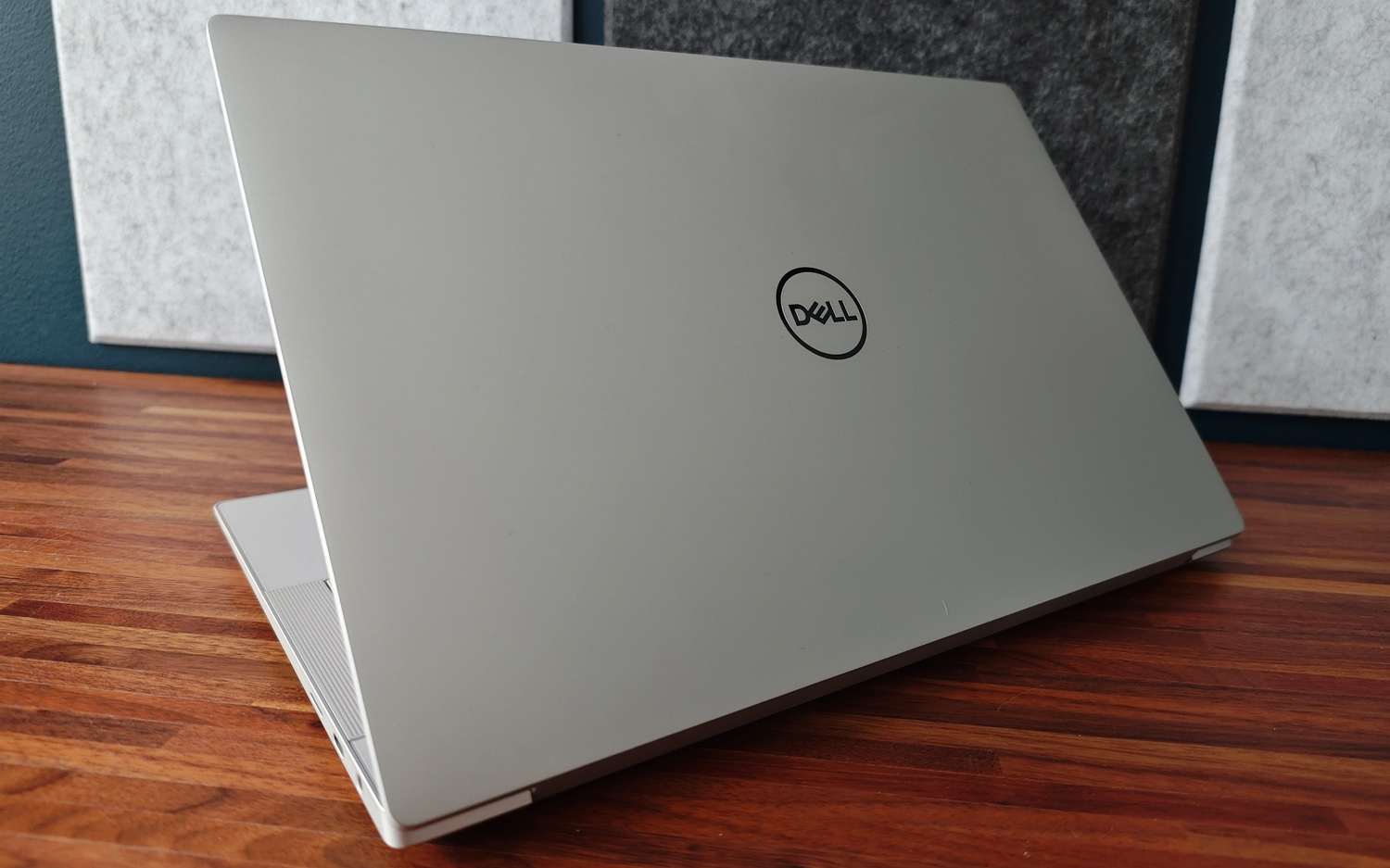
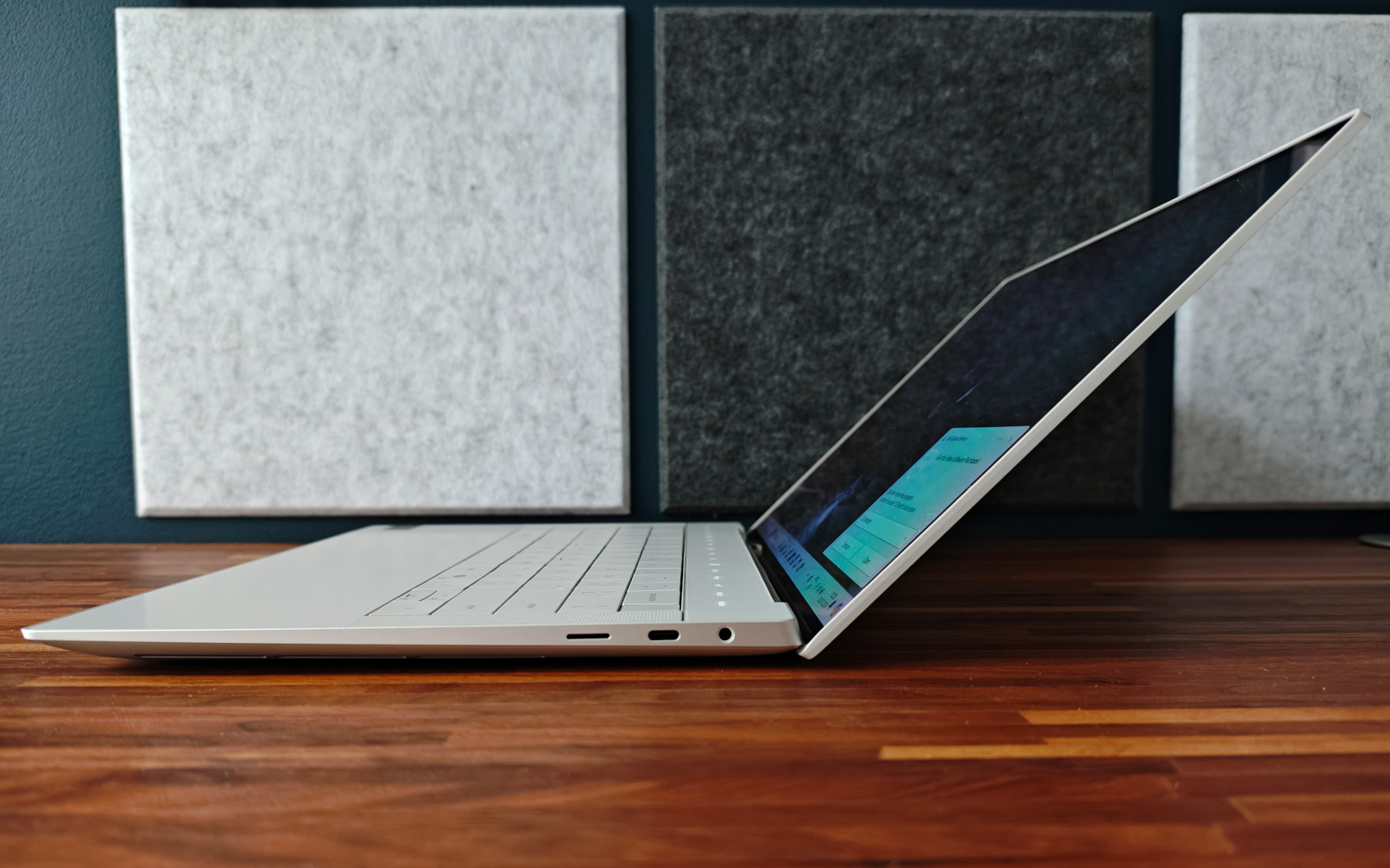
At 18mm thick and weighing 1.72kg, the XPS 14 is hardly a heavyweight – but it’s not a fully-fledged ultraportable either. There are plenty of rivals that’ll be better for lightening your load when travelling. That said, none of ’em have dedicated graphics cards; you’re getting an Nvidia RTX 4050 here, which will be good for 1080p gaming as well as creative tasks. An aluminium and glass build also gives it a high-end feel that lighter rivals can’t match.
From the outside, it looks as minimal as ever, with a simple Dell logo on the lid and a small scattering of ports at the sides. You get three USB-C/Thunderbolt 4 connections – two on the left, one on the right – along with a 3.5mm headphone port and a microSD card slot. I rarely find use for these, seeing how my digital camera uses a full-size SD card. Dell at least includes a dongle in the box for adding HDMI and USB-A when needed.
Open it up, though, and it’s clear Dell has taken the whole minimalist design thing a lot further. Just like the old XPS 13 Plus, there’s no visible touchpad; the QWERTY keys are entirely flat and have no space between them; and the function keys have been ditched in favour of a touch-sensitive bar.
The biggest difference is that Dell has added a pair of up-firing speakers, which flank the keyboard tray and promise much clearer sound than the XPS 13 Plus’ down-firing pair.
Just like last year, the power button also acts as a Windows Hello-certified fingerprint sensor. It’s quick, accurate, and a better choice than the 1080p webcam for skipping the lock screen if (like me) your desk is next to a window. Facial recognition couldn’t always pick me up against bright backlighting. Image quality is a big step up from the 720p cam found in the XPS 13 Plus, at least.
Keyboard & touchpad: invisible touch
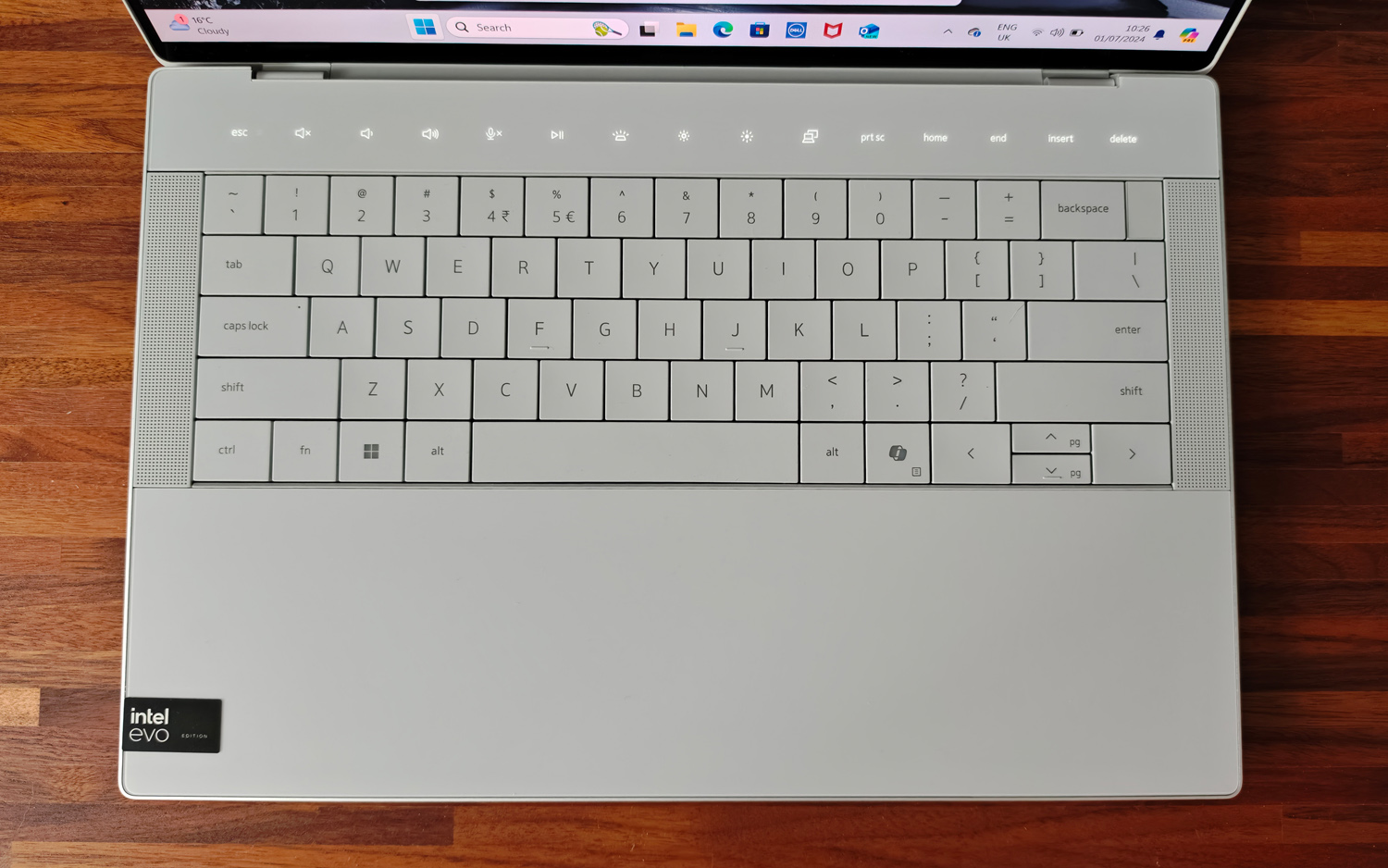
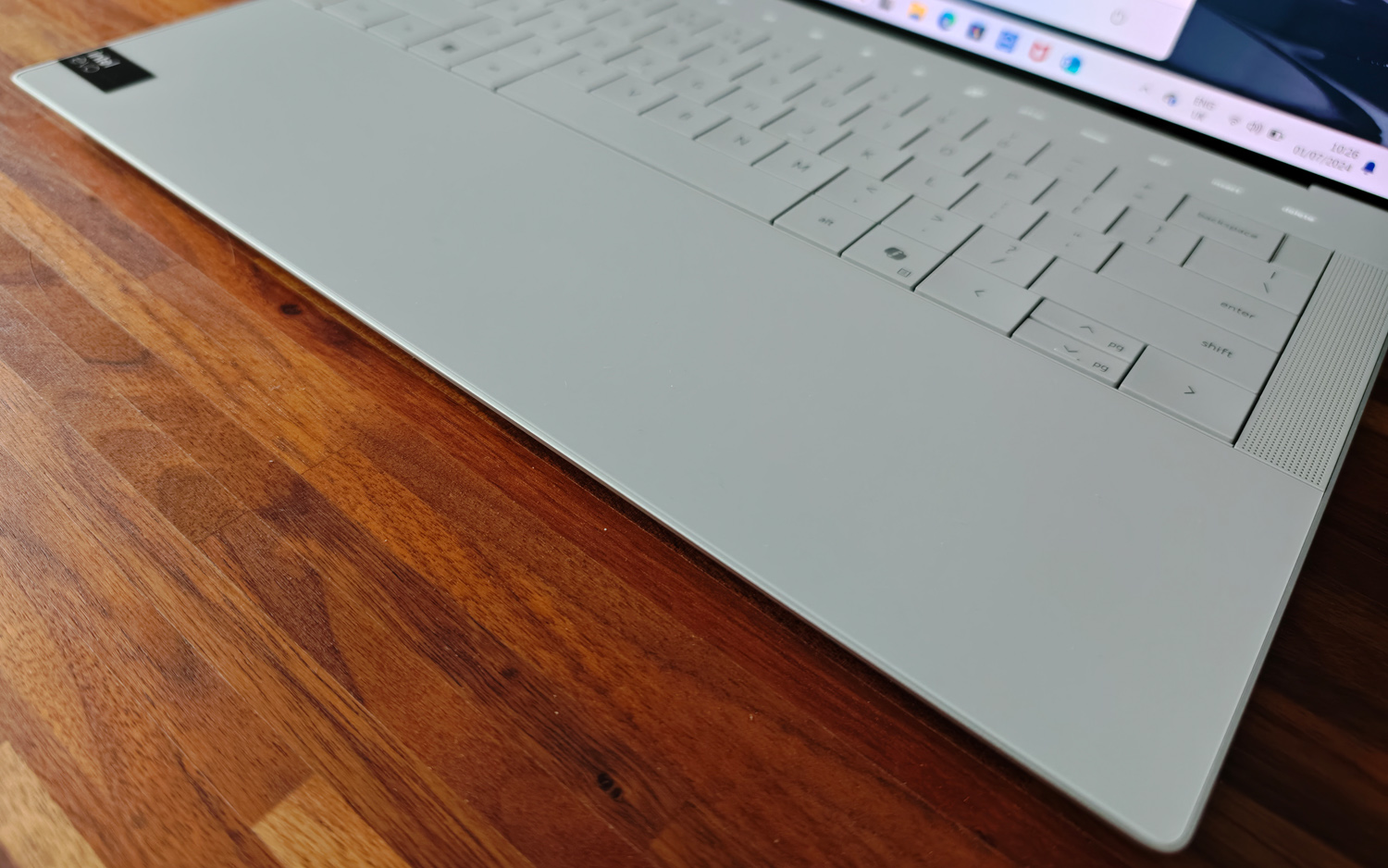
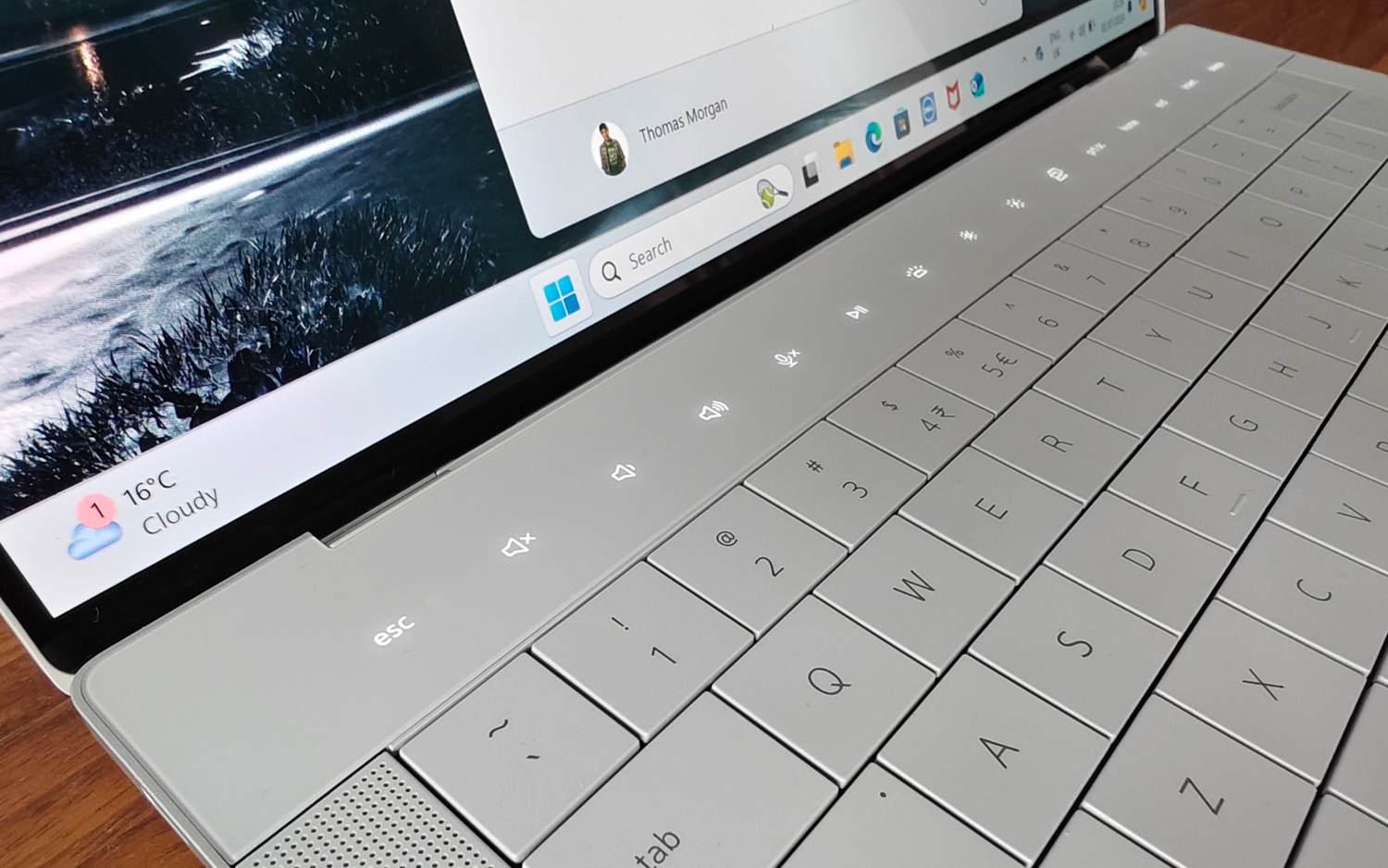
Don’t worry, Dell hasn’t forgotten to add a touchpad. It’s exactly where you think it is, hidden beneath the glass wrist rest. There are no markings, but as the underlying touch surface was wider than I was expecting, I never had any issues with missed swipes or taps. Dragging and dropping felt easier than I remember it being on the XPS 13 Plus, too – although haptic feedback definitely isn’t any stronger.
I didn’t need any extra adjustment to type at full speed, either, despite the keys being very tightly grouped together and the backspace key being slightly offset to make space for the power button. I put it mainly down to each key having a small recess for your fingers to rest on. There’s also a respectable amount of key travel and each one felt satisfyingly springy, whether I was softly pressing or prodding with force. You’ll want to keep the white LED backlight off for anything other than night-time working, as it makes it impossible to read the white key caps during daylight hours.
There’s no way to switch off the row of light-up capacitive keys that replace the function row – just change between shortcuts and function buttons by holding the Fn key. I think this touchbar is just as divisive as it was on the XPS 13 Plus. There’s no haptic feedback to confirm you’ve pressed a button, and I missed having escape and delete as physical keys.
This is one of the first laptops i’ve reviewed with a Copilot key, which launches Windows’ AI assistant. It takes the place of the right control key, which I rarely use and didn’t miss, but I’ve not found a lot of use for Copilot either.
Screen & sound: the cinema show
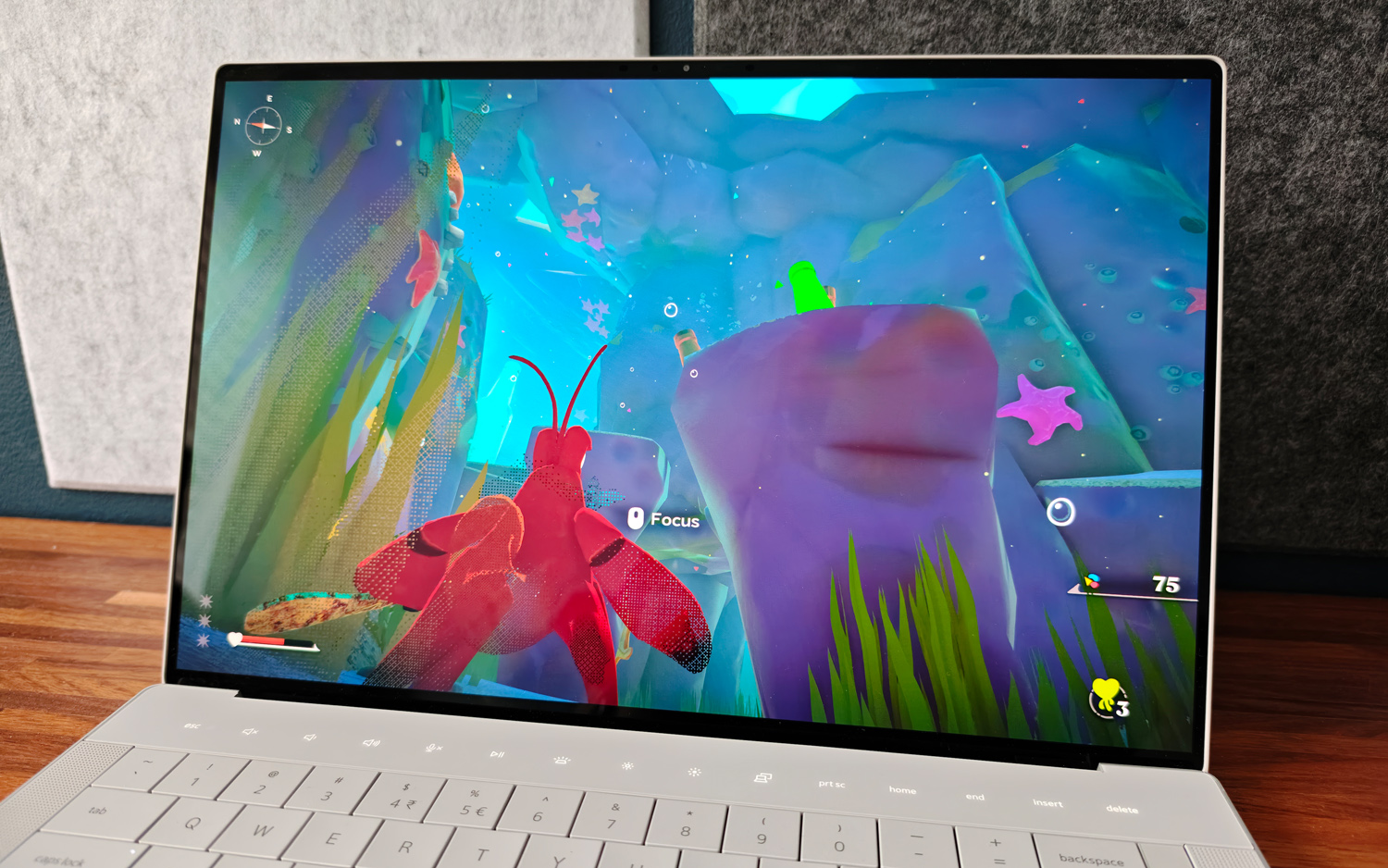
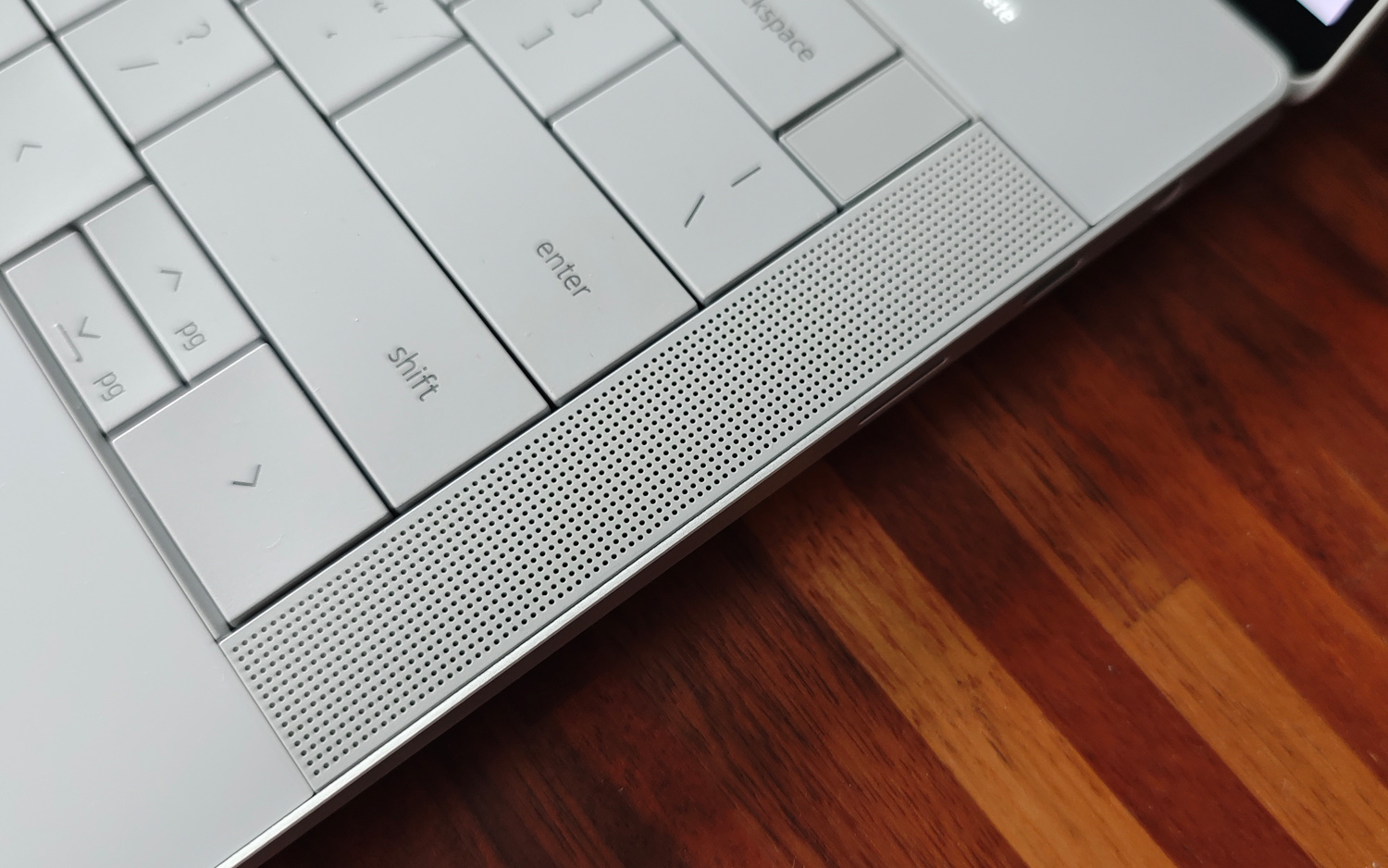
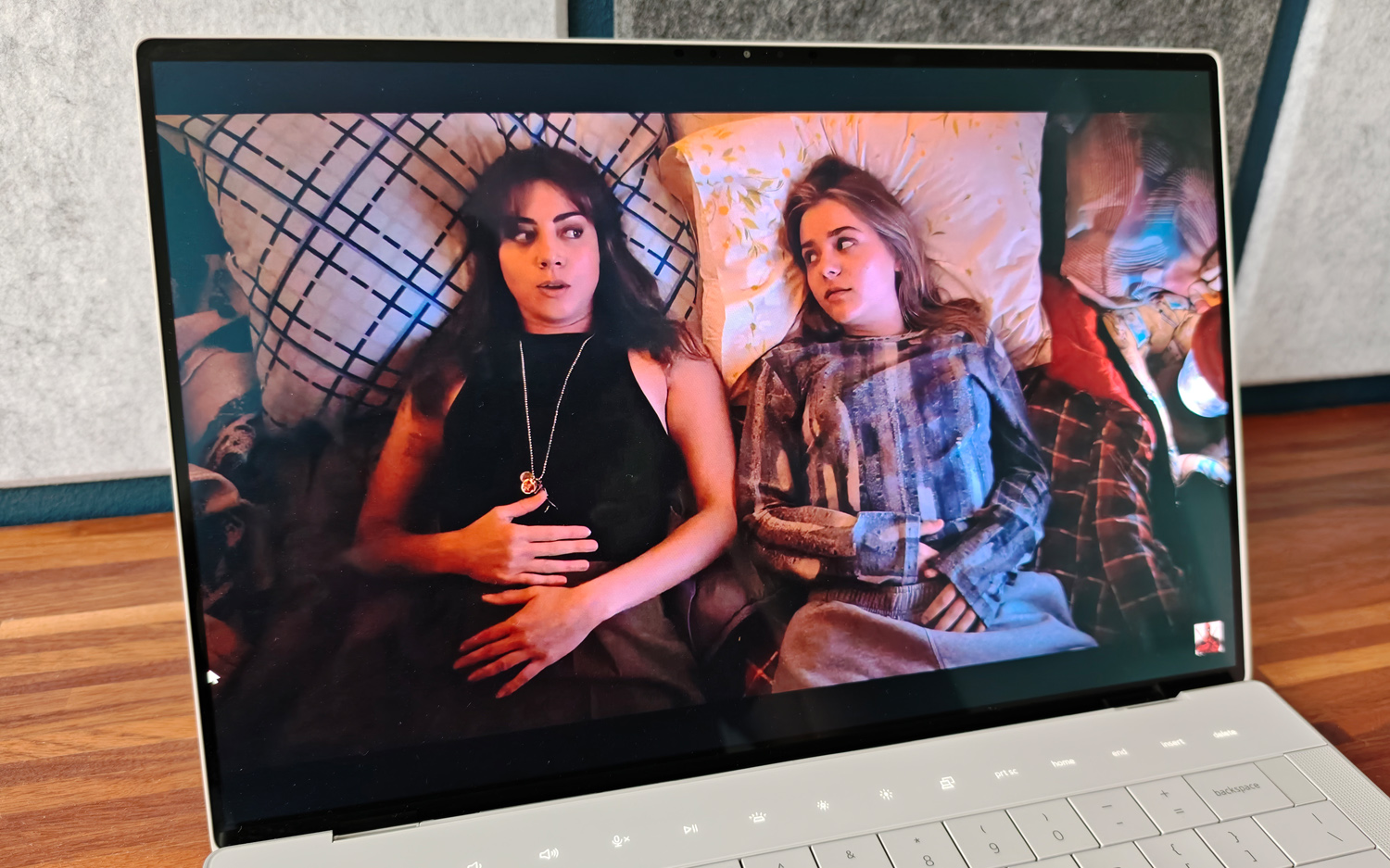
OLED screens used to be a laptop luxury, but now they’re much more common. I was amazed, then, that the base XPS 14 still includes an LCD display. It’s not even a touchscreen, and the resolution tops out at Full HD. That’s honestly pretty poor given the asking price.
My test unit, on the other hand, had a stunning OLED panel with especially skinny bezels, a super-crisp 3200×2000 resolution, and brilliantly smooth 120Hz refresh rate. It’s a £300 optional extra – but one I’d suggest every owner ticks before clicking the buy button.
Colours are deliciously vibrant, contrast is impeccable, and deep inky blacks give phenomenal definition to streaming video content. Dolby Vision HDR also adds bright highlights into the mix, making this a superb entertainment machine. Colour accuracy is on point for creative jobs, too.
Overall brightness is pretty great; I could easily see documents and emails when sat right next to a window on bright, sunny days. The screen does a fantastic job at minimising reflections, and wasn’t a fingerprint magnet either – though after a week of testing the touchscreen still picked up a few smudges. Still, this screen is easily as good as anything Acer, Asus or Lenovo will sell you for similar cash.
The stereo speakers are a real improvement over the XPS 13 Plus’ down-firing pair, with much clearer audio that gets decently loud for a laptop. Straying above 50% volume reveals some high-end brightness, and they can’t match a modern MacBook for outright clarity (seriously, how Apple achieves such brilliant sound from something so slim verges on wizardry). Still, I didn’t feel the need to reach for my headphones for anything other than gaming.
Performance & battery life: GPU makes the difference
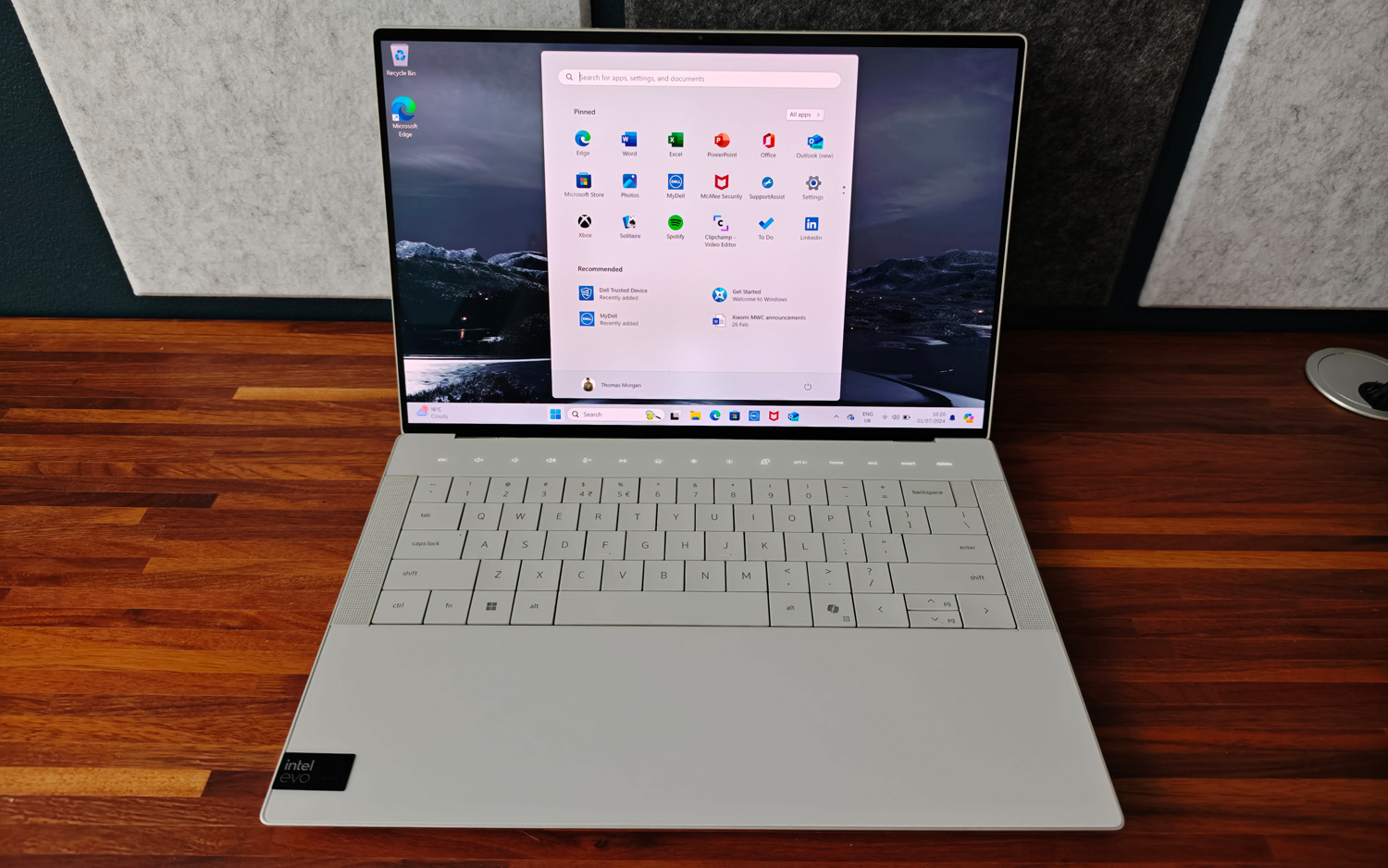
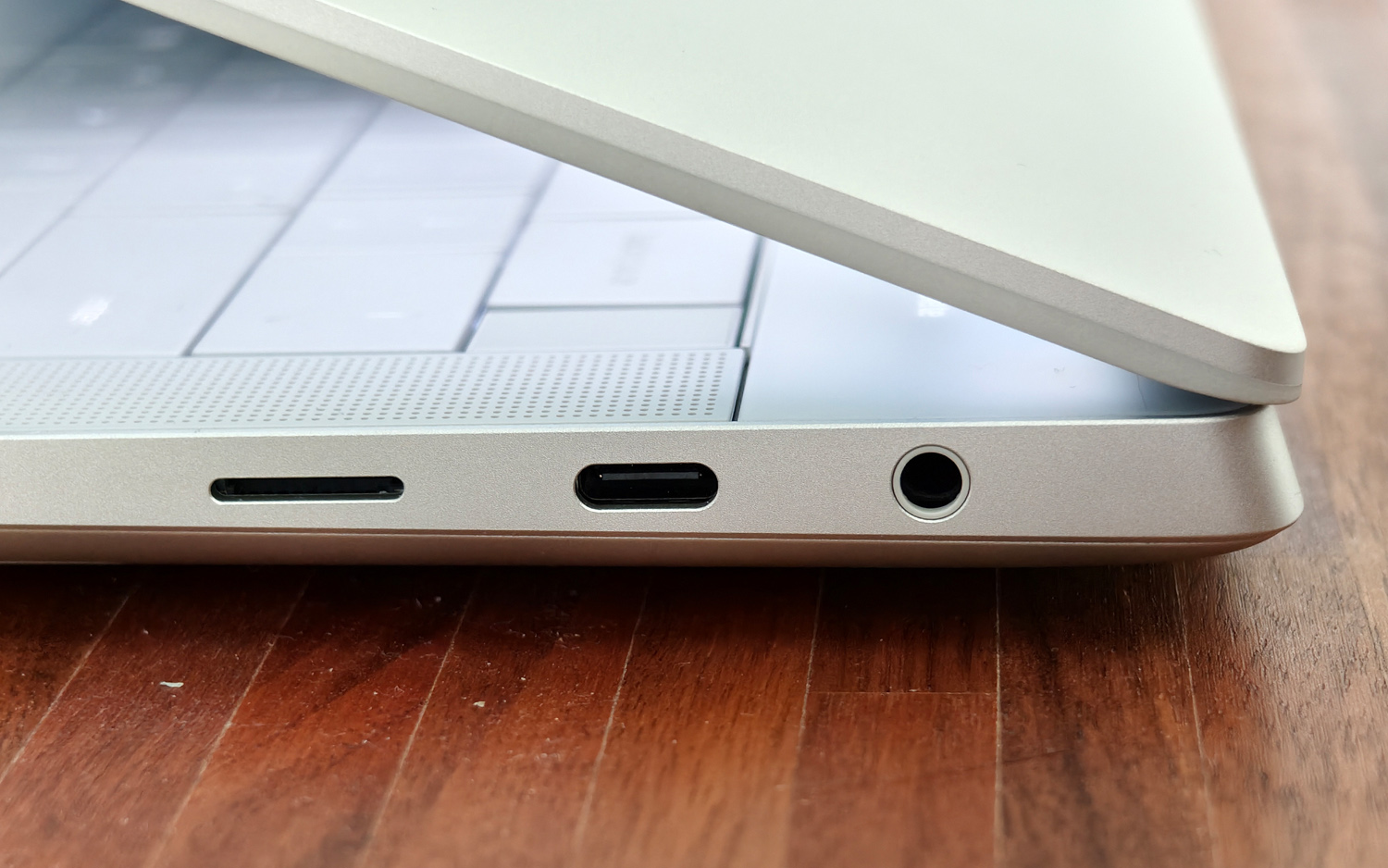
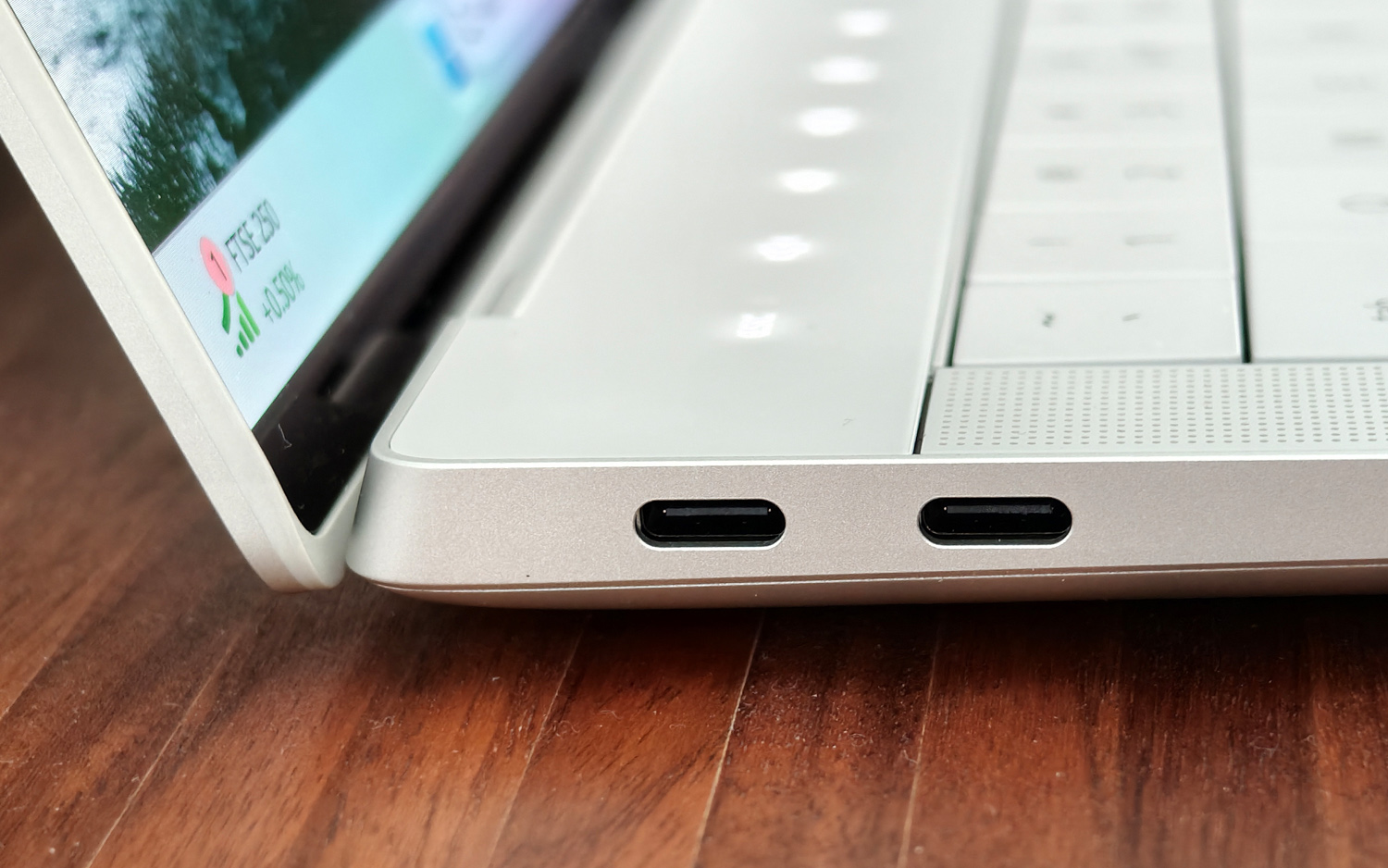
In isolation, the XPS 14 is an impressively powerful machine for its size. My review unit had an Intel Core Ultra 7-155H CPU paired with 32GB of RAM (an optional upgrade over the stock 16GB) and a 1TB SSD, which delivered epically smooth performance in just about every desktop task, and produced some strong numbers in synthetic benchmarks. 2221 and 12100 in the Geekbench single and multicore tests put it level pegging with similarly equipped machines from Asus and Acer that I’ve tested recently.
Compared with an M3 Pro-powered MacBook Pro 14in, though, it’s not quite a class leader, falling short in single-core performance. Then again, if you need a laptop with creative muscle the XPS 14 makes a strong case for itself thanks to an Nvidia RTX 4050 dedicated GPU. This isn’t the beefiest chip going for gaming, but 3D modelling and video encoding both show a nice leg up over rivals that rely on integrated graphics. Only creative apps designed specifically for Apple Silicon see the MacBook regain the lead.
The Dell is clearly the better choice for gamers, though you’ve still got to be realistic with graphics settings. Ray tracing in Cyberpunk 2077 can still bring this machine to its knees at the native resolution, and it couldn’t manage 30fps at Full HD either. Disabling ray tracing and activating Nvidia’s DLSS upscaling makes all the difference, even if a smooth 60fps in CD Project’s sci-fi adventure isn’t quite achievable. Less demanding titles fare much better, with esports mainstays like League of Legends and Rocket League able to make full use of the 120Hz display.
Battery life is respectable, given the sort of hardware Dell has packed inside the XPS 14 – but Apple remains the best pick for anyone wanting true all-day working away from the mains. I saw between seven and eight hours of desktop use, split between web browsing, document editing, YouTube video streaming and image editing. That’s some ten hours short of the best MacBooks, even if it’s on par with rival Intel-powered machines. New Snapdragon X Elite laptops promise considerably longer lifespans that are more on par with Apple, though I’ve yet to test one.
Dell XPS 14 verdict
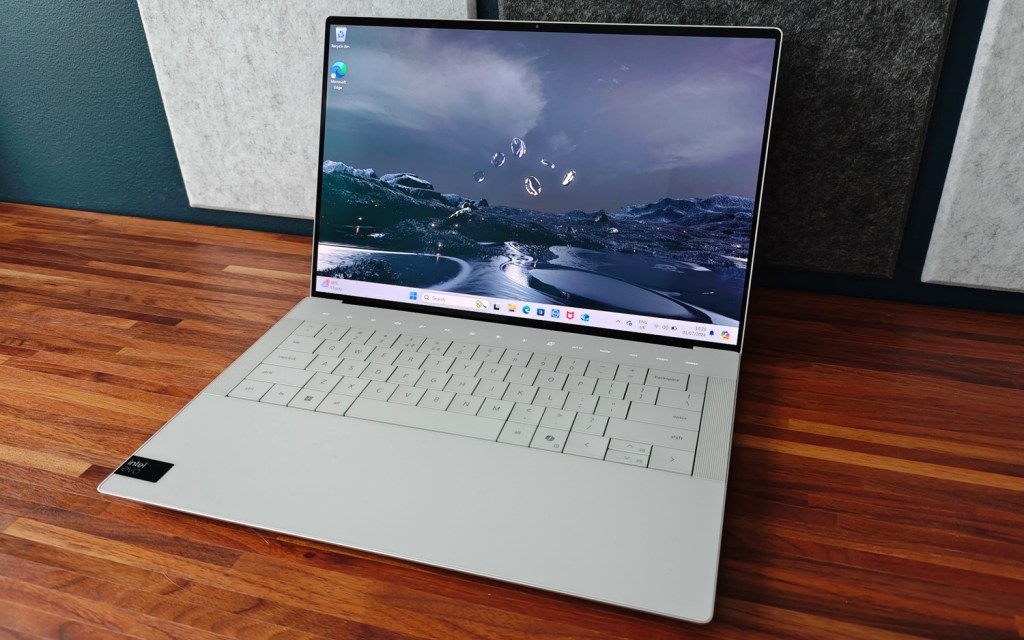
The XPS used to be the only MacBook alternative in town. That’s no longer the case, with rivals having caught up with metal milled ultraportables of their own that don’t skimp on performance. But if you’re captivated by the XPS 14’s distinctive looks, and don’t mind paying a premium for them, this is still a very capable laptop.
It’s plenty powerful, has an absolutely gorgeous display, and improves on several areas that made the outgoing XPS 13 Plus a little hard to love. A dedicated graphics card also sets this laptop apart from many thin-and-light rivals, including the MacBook Pro. If gaming and creative apps in a portable package are a top priority, it’s well worth your attention.
You give do up battery life in exchange, though. If you’re not wedded to Windows, an Apple MacBook Pro remains the longevity champ – and if you are, a Snapdragon X Elite-powered machine may be a better bet.
Stuff Says…
Dell’s streak of potent yet portable premium laptops continues – but the XPS 14 faces stronger Windows competition than previous efforts, and still can’t escape the MacBook Pro’s shadow.
Pros
Impeccable OLED display
Potent performance and a capable gamer with the right GPU
As slickly styled as the XPS has ever been
Cons
Battery life can’t match any MacBook Pro
Top-spec versions are mighty pricey
Touchbar more flash than functional
Dell XPS 14 technical specifications
| Screen | 14.5in, 3200×2000 OLED w/ 120Hz |
| Processor | Intel Core Ultra 7 155H |
| Memory | 32GB RAM |
| Graphics | Nvidia GeForce RTX 4050 |
| Storage | 1TB SSD |
| Operating system | Windows 11 |
| Connectivity | USB-C x3, 3.5mm headphone port, microSD card slot |
| Battery | 70Whr |
| Dimensions | 320x216x18mm, 1.72kg |


